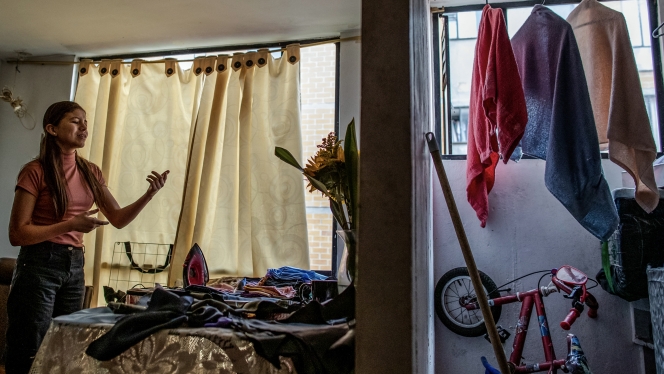![A rare blue and white Ming-style 'Palace' bowl, Qing dynasty, Kangxi period]()
![A rare blue and white Ming-style 'Palace' bowl, Qing dynasty, Kangxi period]()
![5]()
A rare blue and white Ming-style 'Palace' bowl, Qing dynasty, Kangxi period. Estimate 15,000 — 20,000 USD. Photo Sotheby's.
the gently rounded sides rising to an everted rim, deftly painted in darker tones of cobalt-blue forming outlines infilled with paler and varying tones of wash, the exterior with a gently undulating meander of four musk mallow blooms alternating with five-pointed leaves with serrated edges, between double line bands at the rim and foot, the interior with a central medallion enclosing a single flower head within a double circle, encircled by a similar musk mallow meander, the base with an apocryphal six-character Chenghua mark. Diameter 5 3/4 in., 14.6 cm
Provenance: Christie's Hong Kong, 8th October 1990, lot 571.
Notes: The present bowl adheres closely in every way to its famous 15th century prototype. For an example of a Chenghua period palace bowl of this same pattern now in the British Museum see Jessica Harrison-Hall, Ming Ceramics in the British Museum, London, 2001, no. 6:4.
The finely painted decoration on the present bowl is done in homage to the famed 'Palace' bowls of the Chenghua period. Since the time of their production, Chenghua imperial porcelains were lauded for their unmatched quality; a reputation that endured through the Ming and Qing dynasties. The early Qing period was one marked by conflict wrought by the turbulent shift of power from the Ming to the Manchus. One of the many means the Kangxi emperor used to help soothe the transition was to show respect for his predecessors by referencing many of its great accomplishments through the arts. The present bowl exemplifies this effort by Qing potters to show veneration for one of the greatest periods of porcelain production while also displaying their own technical skill. The Kangxi period artisans used notably fine materials; a very white, soft body and rich cobalt in order to produce the present bowl as an tribute to the earlier ware. Among Kangxi porcelains, there is a group of superlative pieces, some unmarked, others bearing marks from earlier reigns, and with Chenghua marks, such as the present piece, which qualitatively are indistinguishable from the finest imperial wares of the period.
Sotheby's. Important Chinese Art, New York. 15 sept. 2015



































